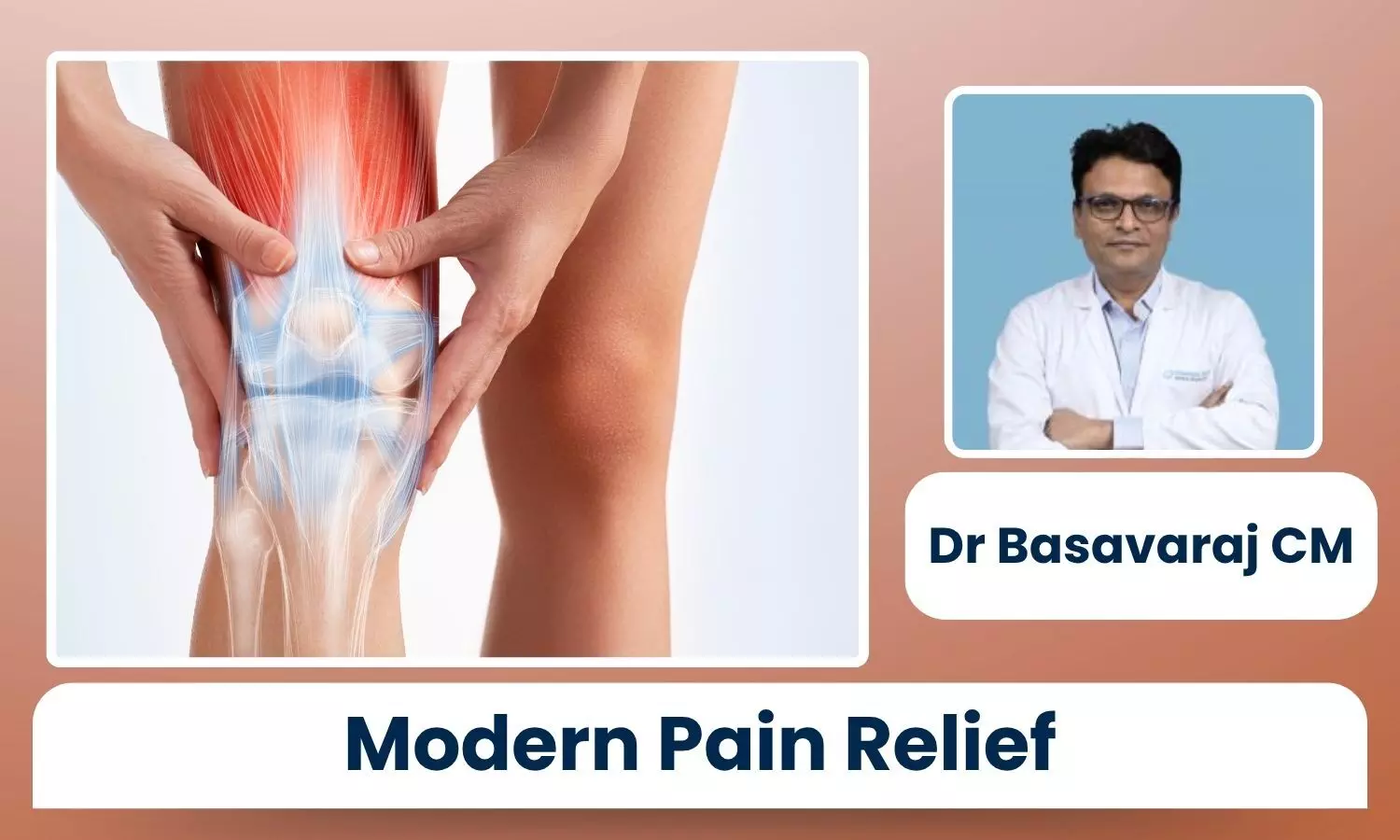Pain Relief Beyond Pills: How Arthritis Care Is Changing in India - Dr Basavaraj CM

For many people in India, joint pain becomes part of life. The knees hurt while climbing stairs, or the hands feel stiff in the morning. Over time, painkillers become routine.
They help for a while, but strong medicines, especially opioids, bring their own problems. Long-term use can cause sleepiness, stomach issues, or even dependence. Doctors now want to move away from that. Across hospitals, the focus is shifting to safer and longer-lasting ways to manage pain.
A Change in Thinking
Earlier, arthritis treatment meant tablets, ointments, and rest. Now, it’s more about movement and rebuilding strength. The idea is simple — pain should not just be silenced, it should be understood.
Rheumatologists, physiotherapists, and pain specialists are working together to design care plans. The goal is to help people move better, not just to feel less pain. Doctors often say pain is a signal, not an enemy. When handled correctly, it can guide recovery instead of stopping it.
Newer Options in Indian Hospitals
In larger cities, some newer therapies are slowly becoming part of regular treatment:
Platelet-Rich Plasma (PRP) Therapy
Here, doctors take a small amount of a patient’s own blood and separate the platelets. These are rich in healing factors. The platelet concentrate is injected into the joint to help with repair and inflammation.
It works best in mild or moderate arthritis. Some people feel better within weeks, others need more than one session. Done properly, it can reduce pain without depending on medicines.
Biologic Treatments
For patients with autoimmune arthritis like rheumatoid arthritis, biologic drugs have changed outcomes worldwide. These medicines block specific parts of the immune system that harm joints.
In India, biologics are available at large hospitals, though the price can be high. Newer biosimilar versions are bringing costs down, which makes them easier to access in metro cities.
Structured Physiotherapy
Physiotherapy remains one of the most useful options. It’s not just exercise it involves guided routines that improve posture, balance, and muscle strength.
In Bengaluru, Hyderabad, and Pune, several hospitals now run pain clinics where physiotherapists work alongside doctors. These sessions help people walk more freely and cut down on daily painkillers.
Evidence and Caution
Doctors warn that these treatments aren’t for everyone. PRP or biologics need proper assessment before use. A quick check-up from an unqualified clinic can make things worse. Tests like X-rays or MRI are important to know how advanced the damage is.
They also remind patients that daily habits matter. Eating balanced meals, keeping weight under control, and sleeping well can make any treatment more effective. Pain relief is never only about the medicine — it’s about the whole lifestyle.
Access and Affordability
This remains the biggest challenge in India. In metro hospitals, people have more choices. In small towns, options are limited to tablets or home remedies. Yet, physiotherapy and simple movement-based care can be done anywhere. It doesn’t need expensive machines, just trained hands and patient guidance.
Some government centres are now training staff in non-drug pain management. The goal is to help patients rely less on opioids, which have caused misuse problems in other countries. India is trying to take a safer route early on.
Living Better With Pain
The way forward is clear. Pain care must include movement. Gentle yoga, swimming, or walking can all help. Even short sessions reduce stiffness and build confidence. Heat therapy and ultrasound are also being used for support in many clinics.
Patients have a big role too. Noticing early stiffness, going to the doctor before joints become badly damaged, and sticking to exercise plans can prevent years of trouble.
Arthritis may not be curable, but life with it can be easier. Relief no longer has to depend on a pill. With proper guidance and steady care, comfort can return — naturally, and without fear.
Disclaimer: The views expressed in this article are of the author and not of Health Dialogues. The Editorial/Content team of Health Dialogues has not contributed to the writing/editing/packaging of this article.


